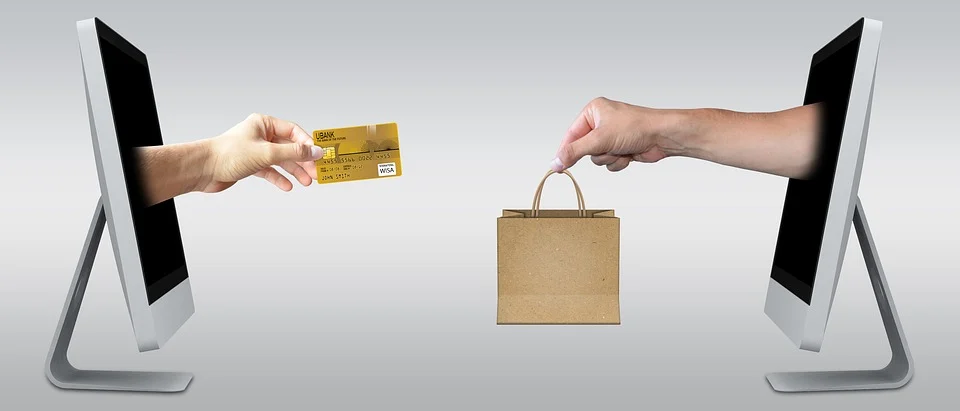E-commerce (electronic commerce) is the trading of labor and products, or the communication of assets or information, over an electronic network, basically the internet. These business exchanges happen either as business-to-business (B2B), business-to-consumer (B2C), consumer-to-consumer, or consumer-to-business. The terms e-commerce and e-business are often used interchangeably. The term e-tail is additionally sometimes used in reference to the transactional processes that make up online retail shopping. Retail e-commerce sales have reached $27 trillion worldwide. Let’s view a few variations of how to spell e-commerce:
e-commerce, E-commerce, ecommerce, Ecommerce, eCommerce, and e commerce
well, in short, it is far easy to answer what e-commerce is than how to spell it, so we can’t agree on any one spelling.

Types of E-commerce Models
The four different types of e-commerce models describe every transaction taking place between businesses and consumers.
- B2C (Business to Consumer):
This is when a business sells any service or good to a customer (e.g., a customer purchases a couple of bags from any online store)
- B2B (Business to Business):
This is when a business sells any service or good to any other business (e.g., a business selling software service to any other business)
- C2C (Consumer To Consumer):
This is when a consumer sells a service or good to any other consumer (e.g., selling your old furniture on eBay to some other consumer).
- C2B (Consumer to Business):
Whenever a buyer offers their own items or administrations to a business or association (for e.g., a force which opens up on a base of internet crowd for any type of expense or picture of their business license.
Advantages and disadvantages of e-commerce
Benefits of e-commerce include its nonstop accessibility, speed of access, the wide accessibility of labor and products for the consumer, easy accessibility, and international reach.
- Availability. Aside from outages or scheduled maintenance, e-commerce sites are available 24×7, permitting guests to browse and shop whenever. Physical businesses tend to open for a fixed number of hours and may even close entirely on certain days.
- Speed of access. While shoppers in an actual store can be slowed by crowds, e-commerce sites run rapidly, which is determined by computing and data transfer capacity considerations on both consumer devices and e-commerce sites. Item pages and shopping basket pages load in a few seconds or less. An e-commerce exchange can comprise a few ticks and take less than five minutes.
- Wide availability. Amazon’s first trademark was”Earth’s Biggest Bookstore” They could make this guarantee because they were an e-commerce site and not an actual store that needed to stock each book on its shelves. E-commerce enables brands to make a wide exhibit of items available, which are then shipped from a warehouse after a purchase is made. Customers will likely have more success observing what they need.
- Easy accessibility. Customers shopping in an actual store might have a tough time determining which aisle a specific item is in. In e-commerce, guests can browse item category pages and use the site search feature the find the item immediately.
- International reach. Physical businesses sell to customers who visit their stores. With e-commerce, businesses can sell to any customer who can access the web. E-commerce can possibly extend a business” customer base
- Lower cost. Pure-play e-commerce businesses stay away from the expense associated with actual stores, like rent, inventory, and cashiers, despite the fact that they might bring about delivery and warehouse costs.
- Personalization and product recommendations. E-commerce sites can follow guests” browsing, search, and purchase history. They can use this information to present useful and personalized item recommendations and acquire valuable experiences about target markets. Examples include the sections of Amazon item pages labeled” Frequently purchased together” and” Customers who viewed this item additionally viewed.”

How Do You Start an Ecommerce Business?
Before starting a business, one must do complete market research. Note down what services you will be selling, and most importantly, investigate the target audience, market, expected cost, and competition. The next step is choosing a name and business structure and getting the documentation done. And just before selling anything, design your website.
Remember to keep everything simple toward the beginning and make sure you use however many channels as you can to market your business so it can develop.
Examples of Ecommerce
Ecommerce can take on a variety of structures, including the different conditional relationships between business and consumers relationships between businesses and consumers, as well as different objects being exchanged as a component of these exchanges.
- Retail:
The sale of an item by a business directly to a customer with practically no intermediary.
- Wholesale:
The sale of items in mass, often to a retailer that then sells them directly to consumers.
- Drop shipping:
The sale of an item that is manufactured and shipped to the consumer by an outsider.
- Crowdfunding:
The collection of money from consumers in advance of an item is available to raise the startup capital necessary to offer it for sale to the public.
- Subscription:
The programmed recurring purchase of an item or service on a regular premise until the subscriber chooses to cancel.
- Physical products:
Any tangible great that requires inventory to be replenished and orders to be truly shipped to customers as sales are made.
- Digital products:
Downloadable computerized merchandise, templates, courses, or media that should be purchased for utilization or licensed for use.
- Services:
An ability or set of abilities is provided in exchange for compensation. The service provider’s time can be purchased for a fee.

The Bottom Line
Ecommerce is only one piece of maintaining an e-business. While the latter involves the entire process of maintaining a business online, e-commerce basically refers to the sale of labor and products through the internet. Ecommerce companies like Amazon, Alibaba, and eBay have changed the manner in which the retail business works, compelling major, traditional retailers to change the manner in which they carry on with work.
On the off chance that beginning an e-commerce site is something you’re considering, make sure you do your research before you start. Furthermore, make sure you start with little, tight concentration to ensure that you have space to develop.




